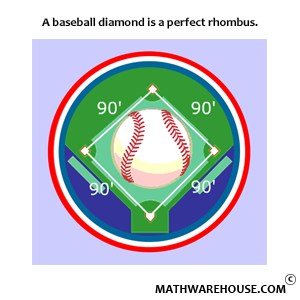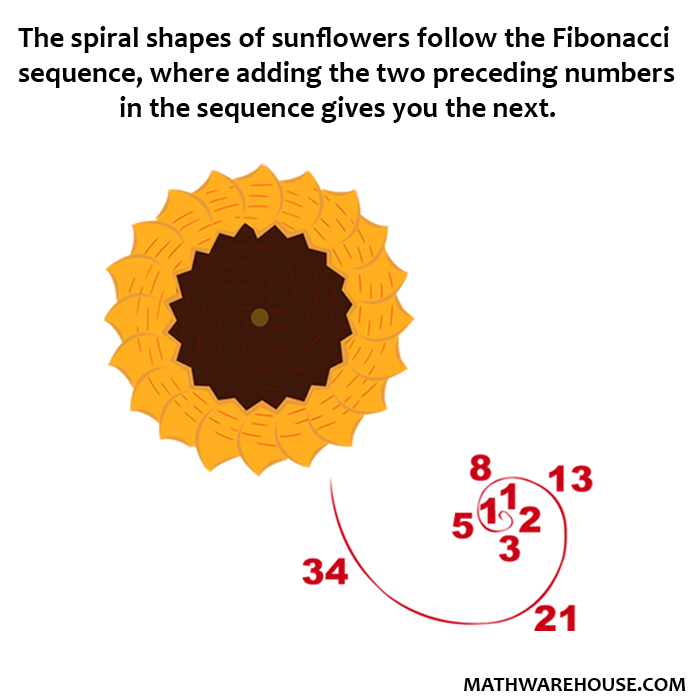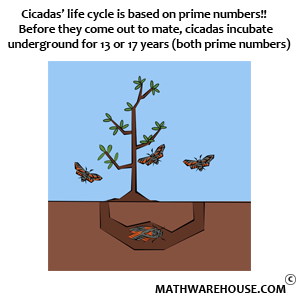Find the point of tangency.
$$ f(5) = \sqrt{2(5) - 1} = \sqrt 9 = 3 $$
The point is $$(5, 3)$$.
Find the derivative.
Since $$f(x) = (2x-1)^{1/2}$$, the derivative is
$$ \begin{align*} f'(x) & = \frac 1 2 (2x-1)^{-1/2}\cdot 2\\[6pt] & = (2x -1)^{-1/2}\\[6pt] & = \frac 1 {\sqrt{2x-1}} \end{align*} $$
Find the slope of the tangent line at $$x =5$$.
$$ f'(5) = \frac 1 {\sqrt{2(5)-1}} = \frac 1 {\sqrt 9} = \frac 1 3 $$
The slope of the tangent line is $$m = \frac 1 3$$.
Find the equation of the tangent line at $$(5,3)$$ with a slope of $$m = \frac 1 3$$.
$$ \begin{align*} y - y_1 & = m(x-x_1)\\[6pt] y - 3 & = \frac 1 3(x-5) \end{align*} $$
The tangent line is $$y - 3 = \frac 1 3(x-5)$$.
For reference, here is the graph of the function and the tangent line we just found.

Find the point of tangency.
$$ f(-1) = e^{2(-1)} = e^{-2} \approx 0.3679 $$
The point is $$\left(-1,e^{-2}\right)$$.
Find the first derivative, and evaluate it at $$x = -1$$.
$$ f'(x) = 2e^{2x}\longrightarrow f'(-1) = 2e^{-2} \approx 0.7358 $$
The slope of the tangent line at this point is $$m = 2e^{-2}$$.
Find the equation of the tangent line at $$\left(-1,e^{-2}\right)$$ with a slope of $$m = 2e^{-2}$$.
$$ \begin{align*} y - y_1 & = m(x-x_1)\\[6pt] y - e^{-2} & = 2e^{-2}(x - (-1))\\[6pt] y - e^{-2} & = 2e^{-2}(x + 1) \end{align*}. $$
$$\displaystyle y - e^{-2} = 2e^{-2}(x + 1)$$, which is approximately the line $$y - 0.3679 = 0.7358(x+1)$$
For reference, the graph of the function and the tangent line we just found are shown below.

Find the point of tangency.
Since we are given the $$y$$-value, we will need to solve for the $$x$$-value.
$$ \begin{align*} \sqrt[3]{1-3x} & = -2\\[6pt] 1-3x & = (-2)^3\\[6pt] 1 - 3x & = -8\\[6pt] 1 + 8 & = 3x\\[6pt] 9 & = 3x\\[6pt] x & = 3 \end{align*} $$
The point is $$(3,-2)$$.
Find the derivative.
Since the function is $$f(x) = (1-3x)^{1/3}$$, the derivative is
$$ \begin{align*} f'(x) & = \frac 1 3(1-3x)^{-2/3}\cdot (-3)\\[6pt] & = -(1-3x)^{-2/3}\\[6pt] & = -\frac 1 {(1-3x)^{2/3}}\\[6pt] & = -\frac 1 {\sqrt[3]{(1-3x)^2}} \end{align*} $$
Find the slope of the tangent line at $$x = 3$$.
$$ \begin{align*} f'(3) & = -\frac 1 {\sqrt[3]{(1 - 3(3))^2}}\\[6pt] & = -\frac 1 {\sqrt[3]{(-8)^2}}\\[6pt] & = -\frac 1 {\sqrt[3]{64}}\\[6pt] & = -\frac 1 4\\[6pt] & = -\frac 1 4 \end{align*} $$
The slope of the tangent line at this point is $$m = -\frac 1 4$$.
Find the equation of the line through the point $$(3,-2)$$ with a slope of $$m=-\frac 1 4$$.
$$ \begin{align*} y - y_1 & = m(x-x_1)\\[6pt] y - (-2) & = -\frac 1 4(x-3)\\[6pt] y + 2 & = -\frac 1 4(x-3) \end{align*} $$
The tangent line at this point is $$y+2 = -\frac 1 4(x-3)$$.
For reference, the graph of the function and the tangent line we found is shown below

Find the point of tangency.
Since we are given the function value, we will need to solve for the $$x$$-value.
$$ \begin{align*} \frac{x+1}{x-2} & = 2\\[6pt] x + 1 & = 2(x-2)\\[6pt] x + 1 & = 2x - 4\\[6pt] 1 + 4 & = 2x - x\\[6pt] 5 & = x \end{align*} $$
The point is $$(5,2)$$.
Find the derivative. Note that finding the derivative will require the quotient rule.
$$ \begin{align*} f'(x) & = \frac{(x-2)(1) - (x+1)(1)}{(x-2)^2}\\[6pt] & = \frac{x - 2 - x - 1}{(x-2)^2}\\[6pt] & = -\frac 3 {(x-2)^2} \end{align*} $$
Find the slope of the tangent line at $$x = 5$$.
$$ \begin{align*} f'(5) & = -\frac 3 {(5-2)^2} = -\frac 3 9 = -\frac 1 3 \end{align*} $$
The slope of the tangent line at this point is $$m=-\frac 1 3$$.
Find the equation of the line through the point $$(5,2)$$ with a slope of $$m = -\frac 1 3$$.
$$ \begin{align*} y-y_1 & = m(x-x_1)\\[6pt] y - 2 & = -\frac 1 3(x - 5) \end{align*} $$
$$ y - 2 = -\frac 1 3(x - 5) $$
For reference purposes, the graph of the function and the tangent line we found are shown below.

Find the derivative.
$$ f'(x) = 2x + 7 $$
Find the $$x$$-value of the point where the derivative equals 4.
$$ \begin{align*} 2x + 7 & = 4\\[6pt] 2x & = -3\\[6pt] x & = -\frac 3 2 \end{align*} $$
Find the point of tangency.
$$ \begin{align*} f\left(-\frac 3 2\right) & = \left(-\frac 3 2\right)^2 + 7\left(-\frac 3 2\right) + 5\\[6pt] & = \frac 9 4 - \frac{21} 2 + 5\\[6pt] & = \frac 9 4 - \frac{42} 4 + \frac{20} 4\\[6pt] & = \frac{29 - 42} 4\\[6pt] & = -\frac{13} 4\\[6pt] \end{align*} $$
The point on the function is $$\left(-\frac 3 2, -\frac{13} 4\right)$$.
Find the equation of the line through the point $$\left(-\frac 3 2, -\frac{13} 4\right)$$ with a slope $$m = 4$$.
$$ \begin{align*} y - y_1 & = m(x-x_1)\\[6pt] y - \left(-\frac{13} 4\right) & = 4\left(x - \left(-\frac 3 2\right)\right)\\[6pt] y + \frac{13} 4 & = 4\left(x +\frac 3 2\right) \end{align*} $$
$$ \displaystyle y + \frac{13} 4 = 4\left(x +\frac 3 2\right) $$
For reference, the graph of the function and the tangent line we found is shown below.

Find the first derivative.
$$ f'(x) = \sec^2 x $$
Find the $$x$$-value where $$f'(x) = 1$$ with $$x\in\left(-\frac \pi 2, \frac \pi 2\right)$$.
$$ \begin{align*} \sec^2 x & = 1\\[6pt] \sec x & = \pm 1 \end{align*} $$
We know that $$\sec x = -1$$ when $$x = \frac{3\pi} 2 + 2\pi n$$ for $$n = 0, \pm 1, \pm 2,\ldots$$. All of these values are outside the given interval for $$x$$. Consequently, we only need to examine when $$\sec x = 1$$.
$$ \begin{align*} \sec x & = 1\\[6pt] \frac 1 {\cos x} & = 1\\[6pt] \cos x & = 1\\[6pt] x & = \arccos 1\\[6pt] x & = 0 + 2\pi n,\quad n=0,\pm 1,\pm 2,\ldots \end{align*} $$
The only $$x$$-value within the allowed interval is $$x = 0$$.
Evaluate $$f(0)$$.
$$ f(0) = \tan 0 = 0 $$
The point on the function is $$(0,0)$$.
Find the equation of the line through $$(0,0)$$ with a slope $$m=1$$.
$$ \begin{align*} y - y_1 & = m(x-x_1)\\[6pt] y - 0 & = 1(x-0)\\[6pt] y & = x \end{align*} $$
The equation of the tangent line is $$y = x$$.
For reference, the graph of the function and the tangent line is shown below.

Find the point of tangency.
$$ f(3) = 2 + \frac 1 {3^2 + 1} = 2 + \frac 1 {10} = \frac{21}{10} $$
The point on the function is $$\left(3, \frac{21}{10}\right)$$.
Find the derivative.
Since $$f(x) = 2 + (x^2+1)^{-1}$$, the derivative is
$$ \begin{align*}% f'(x) & = -1(x^2+1)^{-2}\cdot (2x)\\[6pt] & = -\frac{2x}{(x^2+1)^2} \end{align*} $$
Determine the slope of the tangent line.
$$ \begin{align*} f'(3) & = -\frac{2(3)}{(3^2+1)^2}\\[6pt] & = -\frac 6 {10^2}\\[6pt] & = - \frac 6 {100}\\[6pt] & = - \frac 3 {50} \end{align*} $$
The slope of the tangent line is $$m = -\frac 3 {50}$$.
Find the slope of the normal line.
Since the slope of the tangent line is $$(m = -\frac 3 {50}$$, the slope of the normal line is $$m = \frac{50} 3$$.
Find the equation of the line through $$\left(3,\frac{21}{10}\right)$$ with a slope of $$m=\frac{50} 3$$.
$$ \begin{align*} y-y_1 & = m(x-x_1)\\[6pt] y-\frac{21}{10} & = \frac{50} 3(x-3) \end{align*} $$
$$ y-\frac{21}{10} = \frac{50} 3(x-3) $$
For reference, the graph of the function and the normal line are shown below.

Find the function value at $$x = 4$$.
$$ f(4) = \ln (4^2 -1) = \ln(15) \approx 2.708 $$
The point on the function is $$(4,\ln 15)$$.
Find the derivative, and use it to find the slope of the normal line at $$x = 4$$.
$$ \begin{align*} f'(x) & = \frac 1 {x^2-1}\cdot (2x)\\[6pt] & = \frac{2x}{x^2-1}\\[6pt] & \\[6pt] f'(4) & = \frac{2(4)}{4^2-1}\\[6pt] & = \frac 8 {15} \end{align*} $$
The slope of the tangent line is $$m = \frac 8 {15}$$. This means the slope of the normal line is $$m = -\frac{15} 8$$.
Find the equation of the line through $$(4, \ln 15)$$ with a slope of $$m = -\frac{15} 8$$.
$$ \begin{align*} y-y_1 & = m(x-x_1)\\[6pt] y-\ln 15 & = -\frac{15} 8(x-4) \end{align*} $$
$$ y-\ln 15 = -\frac{15} 8(x-4) $$
For reference, the graph of the function and the normal line are shown below.

Find the point of tangency.
$$ \begin{align*} 4e^{-0.5x} & = 8\\[6pt] e^{-0.5x} & = 2\\[6pt] -0.5x & = \ln 2\\[6pt] x & = -2\ln 2\\[6pt] & \approx -1.386 \end{align*} $$
The point of tangency is $$(-2\ln 2, 8)$$.
Use the derivative to find the slope of the normal line.
$$ \begin{align*} f'(x) & = 4e^{-0.5x}\cdot (-0.5)\\[6pt] & = -2e^{-0.5x} \end{align*} $$
Evaluating the derivative at $$x = -2\ln 2$$, we get the following.
$$ \begin{align*} f'(\blue{-2\ln 2}) & = -2e^{-0.5\blue{(-2\ln 2)}}\\[6pt] & = -2e^{\ln 2}\\[6pt] & = -2(2)\\[6pt] & = -4 \end{align*} $$
So the slope of the tangent line at $$x = -2\ln 2$$ is $$m = -4$$. This means the slope of the normal line is $$m = \frac 1 4$$.
Find the equation of the line through $$(-2\ln2, 8)$$ with slope $$m=\frac 1 4$$.
$$ \begin{align*} y-y_1 & = m(x-x_1)\\[6pt] y - 8 & = \frac 1 4(x-(-2\ln2))\\[6pt] y - 8 & = \frac 1 4(x+2\ln 2) \end{align*} $$
$$ y-8 = \frac 1 4(x+2\ln 2) $$
For reference, the graph of the function and the normal line is shown below.

Find the point of tangency.
$$ \begin{align*} \frac 3 2(x-3)^{2/3} & = 6\\[6pt] (x-3)^{2/3} & = 4\\[6pt] \left((x-3)^{2/3}\right)^3 & = 4^3\\[6pt] (x-3)^2 & = 64\\[6pt] x-3 & = \pm\sqrt{64}\\[6pt] x & = 3\pm 8\\[6pt] \end{align*} $$
Since the question requires $$x\geq 0$$, we conclude $$x = 11$$. This means the point of tangency is $$(11,6)$$.
Find the first derivative.
$$ \begin{align*} f'(x) & = \frac 3 2\cdot \frac 2 3(x-3)^{-1/3}\cdot (1)\\[6pt] & = (x-3)^{-1/3}\\[6pt] & = \frac 1 {\sqrt[3]{x-3}} \end{align*} $$
Determine the slope of the normal line.
$$ \begin{align*} f'(11) & = \frac 1 {\sqrt[3]{11-3}}\\[6pt] & = \frac 1 {\sqrt[3] 8}\\[6pt] & = \frac 1 2 \end{align*} $$
The slope of the tangent line is $$m = \frac 1 2$$. This means the slope of the normal line is $$m = -2$$.
Find the equation of the line through $$(11,6)$$ with a slope of $$m=-2$$.
$$ \begin{align*} y-y_1 & = m(x-x_1)\\[6pt] y-6 & = -2(x-11) \end{align*} $$
Find the first derivative.
$$ \begin{align*}% f'(x) & =-\frac 1 4\cdot 2(x+2)\\[6pt] & =-\frac 1 2(x+2)\\[6pt] \end{align*} $$
Find the $$x$$-value where the normal line has a slope of $$m=5$$.
Since the normal line has a slope of $$m=5$$, the tangent line will have a slope of $$m = -\frac 1 5$$. So, to find the $$x$$-value of the point on the function, we set the derivative equal to $$-\frac 1 5$$ and solve.
$$ \begin{align*} -\frac 1 2(x+2) & = -\frac 1 5\\[6pt] x+2 & = \frac 2 5\\[6pt] x & = \frac 2 5 - 2\\[6pt] & = - \frac 8 5 \end{align*} $$
Find the point of tangency.
$$ \begin{align*}% f\left(-\frac 8 5\right) & = -\frac 1 4\left(-\frac 8 5 + 2\right)^2 + 1\\[6pt] & = -\frac 1 4\left(\frac 2 5\right)^2 + 1\\[6pt] & = -\frac 1 4\left(\frac 4 {25}\right) + 1\\[6pt] & = -\frac 1 {25} + \frac{25}{25}\\[6pt] & = \frac{24}{25} \end{align*} $$
So the point of tangency is $$\left(-\frac 8 5, \frac{24}{25}\right)$$.
Find the equation of the line through $$\left(-\frac 8 5, \frac{24}{25}\right)$$ with slope of $$m=5$$.
$$ \begin{align*} y-y_1 & = m(x-x_1)\\[6pt] y-\frac{24}{25} & = 5\left(x-\left(-\frac 8 5\right)\right)\\[6pt] y-\frac{24}{25} & = 5\left(x+\frac 8 5\right) \end{align*} $$
$$ \displaystyle y-\frac{24}{25} = 5\left(x+\frac 8 5\right) $$
For reference, the graph of the function and the normal line we found are shown below.

Find the derivative. Note that we will need the quotient rule to differentiate this function.
$$ \begin{align*} f'(x) & = \frac{(3-x)\cdot 2 - (2x+1)(-1)}{(3-x)^2}\\[6pt] & = \frac{6-2x + 2x+1}{(3-x)^2}\\[6pt] & = \frac 7 {(3-x)^2}\\[6pt] \end{align*} $$
Find the $$x$$-value of the point where the normal line has a slope of $$m=-7$$.
Since the normal line has a slope of $$m=-7$$, the tangent line will have a slope of $$m=\frac 1 7$$. So, we set the derivative equal to $$\frac 1 7$$ and solve for $$x$$.
$$ \begin{align*} \frac 7 {(3-x)^2} & = \frac 1 7\\[6pt] \frac {(3-x)^2} 7 & = 7\\[6pt] (3-x)^2 & = 49\\[6pt] 3-x & = \pm 7\\[6pt] 3\pm 7 & = x \end{align*} $$
Since $$x<0$$, we choose $$x = 3 - 7 = -4$$.
Find the point of tangency.
$$ \begin{align*} f(-4) & = \frac{2(-4)+1}{3-(-4)}\\[6pt] & = \frac{-8+1}{3+4}\\[6pt] & = \frac{-7}{7}\\[6pt] & = -1 \end{align*} $$
The point of tangency is $$(-4,-1)$$.
Find the equation of the line that passes through $$(-4,-1)$$ with a slope of $$m=-7$$.
$$ \begin{align*} y-y_1 & = m(x-x_1)\\[6pt] y - (-1) & = -7(x-(-4))\\[6pt] y + 1 & = -7(x+4)\\[6pt] \end{align*} $$
Find the $$y$$-value of the point of tangency.
$$ \begin{align*} 16\blue{x^2} + 9y^2 & = 85\\[6pt] 16\blue{\left(\frac 1 2\right)^2} + 9y^2 & = 85\\[6pt] 4 + 9y^2 & = 85\\[6pt] 9y^2 & = 81\\[6pt] y^2 & = 9\\[6pt] y & = \pm 3 \end{align*} $$
Since we are told $$y<0$$, we have the point $$\left(\frac 1 2,-3\right)$$.
Find the formula for $$\frac{dy}{dx}$$.
Since the ellipse is defined implicitly, we will need to use implicit differentiation.
$$ \begin{align*} 16(2x) + 9\left(2y\,\frac{dy}{dx}\right) & = 0\\[6pt] 32x + 18y\,\frac{dy}{dx} & = 0\\[6pt] 18y\,\frac{dy}{dx} & = -32x\\[6pt] \frac{dy}{dx} & = -\frac{32x}{18y}\\[6pt] & = -\frac{16x}{9y} \end{align*} $$
Find the slope of the tangent line at the point $$\left(\frac 1 2, -3\right)$$.
$$ \begin{align*} \frac{dy}{dx}\bigg|_{\left(\blue{\frac 1 2},\red{-3}\right)} & = -\frac{16\blue{\left(\frac 1 2\right)}}{9\red{\left(-3\right)}}\\[6pt] & = -\frac{8}{-27}\\[6pt] & = \frac{8}{27} \end{align*} $$
The slope of the tangent line at the point of tangency is $$m = \frac 8 {27}$$.
Find the equation of the line through the point $$\left(\frac 1 2, -3\right)$$ with a slope of $$m = \frac 8 {27}$$.
$$ \begin{align*} y - y_1 & = m(x-x_1)\\[6pt] y -\left(-3\right) & = \frac 8 {27}\left(x - \frac 1 2\right)\\[6pt] y + 3 & = \frac 8 {27}\left(x - \frac 1 2\right) \end{align*} $$
$$ \displaystyle y + 3 = \frac 8 {27}\left(x - \frac 1 2\right) $$
For reference, the graph of the ellipse and the tangent line are shown below.

Find the equation for $$\frac{dy}{dx}$$.
Since the curve is defined implicitly, we will use implicit differentiation. Note that the right-hand side of the equation will require the product rule.
$$ \begin{align*} 3x^2 + 3y^2\,\frac{dy}{dx} & = 9(1)y + 9x\,\frac{dy}{dx}\\[6pt] 3y^2\,\frac{dy}{dx} - 9x\,\frac{dy}{dx} & = 9y - 3x^2\\[6pt] y^2\,\frac{dy}{dx} - 3x\,\frac{dy}{dx} & = 3y - x^2\\[6pt] \frac{dy}{dx}\left(y^2 - 3x\right) & = 3y - x^2\\[6pt] \frac{dy}{dx} & = \frac{3y - x^2}{y^2 - 3x} \end{align*} $$
Evaluate the derivative at $$(2,4)$$.
$$ \begin{align*} \frac{dy}{dx}_{(\blue{2},\red{4})} & = \frac{3\red{(4)} - \blue{(2)}^2}{\red{(4)}^2 - 3\blue{(2)}}\\[6pt] & = \frac{12 - 4}{16 - 6}\\[6pt] & = \frac{8}{10}\\[6pt] & = \frac 4 5 \end{align*} $$
Find the equation of the line through $$(2, 4)$$ with a slope of $$m=\frac 4 5$$.
$$ \begin{align*} y-y_1& = m(x-x_1)\\[6pt] y-4 & = \frac 4 5(x-2) \end{align*} $$
$$ y-4 = \frac 4 5(x-2) $$
For reference, the graph of the curve and the tangent line are shown below.

Write out the equation for $$a = 2$$.
$$ \begin{align*}% (x^2+y^2)(y^2 + x(x+\blue a)) & = 4\blue{a}xy^2\\[6pt] (x^2+y^2)(y^2 + x(x+\blue 2)) & = 4\blue{(2)}xy^2\\[6pt] (x^2+y^2)(y^2 + x(x+2)) & = 8xy^2 \end{align*} $$
Find the points of tangency.
$$ \begin{align*} (x^2+y^2)(y^2 + \red x(\red x+2)) & = 8\red{(x)}y^2\\[6pt] (x^2+y^2)(y^2 + \red 1(\red 1+2)) & = 8\red{(1)}y^2\\[6pt] (1+y^2)(y^2 + 3) & = 8y^2\\[6pt] y^2 + 3 + y^4 + 3y^2 & = 8y^2\\[6pt] y^4 + 4y^2 + 3& = 8y^2\\[6pt] y^4 - 4y^2 + 3 & = 0\\[6pt] (y^2 - 3)(y^2-1) & = 0\\[6pt] y^2 = 3 & \quad y^2 = 1\\[6pt] y = \pm\sqrt 3 &\quad y = \pm 1 \end{align*} $$
Since we need positive $$y$$-values, we have the points $$(1,1)$$ and $$(1,\sqrt 3)$$.
Find the formula for $$\frac{dy}{dx}$$.
Since the trifolium curve is defined implicitly, we will use implicit differentiation. Note that the both sides of the equation involve products, so we will need the product rule.
Before differentiating, we will rewrite the original equation as follows:
$$ \begin{align*} (x^2+y^2)(y^2 + x(x+2)) & = 8xy^2\\[6pt] (x^2+y^2)(y^2 + x^2+2x) & = 8xy^2. \end{align*} $$
Now to differentiate.
$$ \begin{align*} \left(2x+2y\,\frac{dy}{dx}\right)(y^2 + x^2+2x) + (x^2 + y^2)\left(2y\,\frac{dy}{dx} + 2x + 2\right) & = 8y^2 + 16xy\,\frac{dy}{dx} \end{align*} $$
Next, we distribute.
$$ \begin{align*} \left(2x+2y\,\frac{dy}{dx}\right)\blue{(y^2 + x^2+2x)} + \red{(x^2 + y^2)}\left(2y\,\frac{dy}{dx} + 2x + 2\right) & = 8y^2 + 16xy\,\frac{dy}{dx}\\[6pt] 2x\blue{(y^2 + x^2+2x)}+2y\blue{(y^2 + x^2+2x)}\,\frac{dy}{dx} + 2y\red{(x^2 + y^2)}\,\frac{dy}{dx} + (2x + 2)\red{(x^2 + y^2)} & = 8y^2 + 16xy\,\frac{dy}{dx} \end{align*} $$
Collect the $$\frac{dy}{dx}$$ terms on the left, factor, then solve.
$$ \begin{align*} 2y(y^2 + x^2+2x)\,\frac{dy}{dx} + 2y(x^2 + y^2)\,\frac{dy}{dx} - 16xy\,\frac{dy}{dx}& = 8y^2 - 2x(y^2 + x^2+2x) - (2x + 2)(x^2 + y^2)\\[6pt] \frac{dy}{dx}\left[2y(y^2 + x^2+2x) + 2y(x^2 + y^2) - 16xy\right] & = 8y^2 - 2x(y^2 + x^2+2x) - (2x + 2)(x^2 + y^2)\\[6pt] \frac{dy}{dx} & = \frac{8y^2 - 2x(y^2 + x^2+2x) - (2x + 2)(x^2 + y^2)}{2y(y^2 + x^2+2x) + 2y(x^2 + y^2) - 16xy} \end{align*} $$
Simplify by expanding the numerator and denominator and collecting like terms.
$$ \begin{align*} \frac{dy}{dx} & = \frac{8y^2 - 2xy^2 - 2x^3 - 4x^2 -2x^3 - 2xy^2 - 2x^2 - 2y^2}{2y^3 + 2x^2y+4xy + 2x^2y + 2y^3 - 16xy}\\[6pt] \frac{dy}{dx} & = \frac{6y^2 - 4xy^2 - 4x^3 - 6x^2}{4y^3 + 4x^2y - 12xy}\\[6pt] \frac{dy}{dx} & = \frac{2(3y^2 - 2xy^2 - 2x^3 - 3x^2)}{2(2y^3 + 2x^2y - 6xy)}\\[6pt] \frac{dy}{dx} & = \frac{3y^2 - 2xy^2 - 2x^3 - 3x^2}{2y^3 + 2x^2y - 6xy} \end{align*} $$
Find the slopes of the tangent lines at the two points.
At $$(1,1)$$ the slope of the tangent line is
$$ \begin{align*} \frac{dy}{dx}\bigg|_{(\blue{1},\red{1})} & = \frac{3\red{(1)}^2 - 2\blue{(1)}\red{(1)}^2 - 2\blue{(1)}^3 - 3\blue{(1)}^2}{2\red{(1)}^3 + 2\blue{(1)}^2\red{(1)} - 6\blue{(1)}\red{(1)}}\\[6pt] & = \frac{3 - 2 -2 - 3}{2 + 2 - 6}\\[6pt] & = \frac{-4}{-2}\\[6pt] & = 2. \end{align*} $$
At $$(1,\sqrt 3)$$, the slope of the tangent line is
$$ \begin{align*} \frac{dy}{dx}\bigg|_{(\blue{1},\red{\sqrt 3})} & = \frac{3\red{(\sqrt 3)}^2 - 2\blue{(1)}\red{(\sqrt 3)}^2 - 2\blue{(1)}^3 - 3\blue{(1)}^2}{2\red{(\sqrt 3)}^3 + 2\blue{(1)}^2\red{(\sqrt 3)} - 6\blue{(1)}\red{(\sqrt 3)}}\\[6pt] & = \frac{3(3) - 2(3) - 2 - 3}{2(3\sqrt 3) + 2\sqrt 3 - 6\sqrt 3}\\[6pt] & = \frac{-2}{2\sqrt 3}\\[6pt] & = - \frac 1 {\sqrt 3}\\[6pt] & = -\frac{\sqrt 3} 3 \end{align*} $$
Find the slopes of the normal lines at the two points.
At $$(1,1)$$ the slope of the normal line is $$m = -\frac 1 2$$.
At $$(1,\sqrt 3)$$ the slope of the normal line is $$m = \sqrt 3$$.
Find the equations of the normal lines.
At $$(1,1)$$ the equation of the normal line is
$$ y - 1 = -\frac 1 2(x-1) $$
At $$(1,\sqrt 3)$$ the equation of the normal line is
$$ y - \sqrt 3 = \sqrt 3(x-1) $$
The equations of the normal lines are $$y - 1 = -\frac 1 2(x-1)$$ and $$y-\sqrt 3 = \sqrt 3(x-1)$$.
For reference, the graph of the trifolium and the two normal lines is shown below.

Determine the $$y$$-value of the point of tangency.
$$ \begin{align*} y^2 & = 9(3-\blue{2})^5\,\blue{(2)}^2\\[6pt] y^2 & = 9(1)^5\,(4)\\[6pt] y^2 & = 36\\[6pt] y & = \pm\sqrt{36} \end{align*} $$
Since we want $$y>0$$, the point of tangency is $$\left(2, 6\right)$$.
Find the formula for $$\frac{dy}{dx}$$.
Note that the equation is implicitly defined, so we will use implicit differentiation. Additionally, the right-hand side of the equation requires the product rule.
$$ \begin{align*} 2y\,\frac{dy}{dx} & = 9(5)(3-x)^4(-1)\cdot x^2 + 9(3-x)^5\cdot 2x\\[6pt] 2y\,\frac{dy}{dx} & = 9x\left[-5x(3-x)^4 + 2(3-x)^5\right]\\[6pt] 2y\,\frac{dy}{dx} & = 9x(3-x)^4\left[-5x + 2(3-x)\right]\\[6pt] 2y\,\frac{dy}{dx} & = 9x(3-x)^4(-5x + 6-2x)\\[6pt] 2y\,\frac{dy}{dx} & = 9x(3-x)^4(6-7x)\\[6pt] \frac{dy}{dx} & = \frac{9x(6-7x)(3-x)^4}{2y} \end{align*} $$
Find the slope of the tangent line and the normal line at the point $$(2, 6)$$.
$$ \begin{align*} \frac{dy}{dx}\bigg|_{\left(\blue{2}, \red{6}\right)} & = \frac{9\blue{(2)}(6-7\blue{(2)})(3-\blue{(2)})^4}{2\red{(4)}}\\[6pt] & = \frac{9(6-14)(1)^4} 4\\[6pt] & = \frac{9(-8)} 4\\[6pt] & = -18 \end{align*} $$
The slope of the tangent line is $$m = -18$$, so the slope of the normal line is $$m = \frac 1 {18}$$.
Write down the equation of the line through the point $$(2, 6)$$ with a slope of $$m = \frac 1 {18}$$.
$$ \begin{align*} y-y_1 & = m(x-x_1)\\[6pt] y-6 & = \frac 1 {18}(x-2) \end{align*} $$
$$ \displaystyle y-6 = \frac 1 {18}(x-2) $$
For reference, the curve and the normal line are shown below.






















